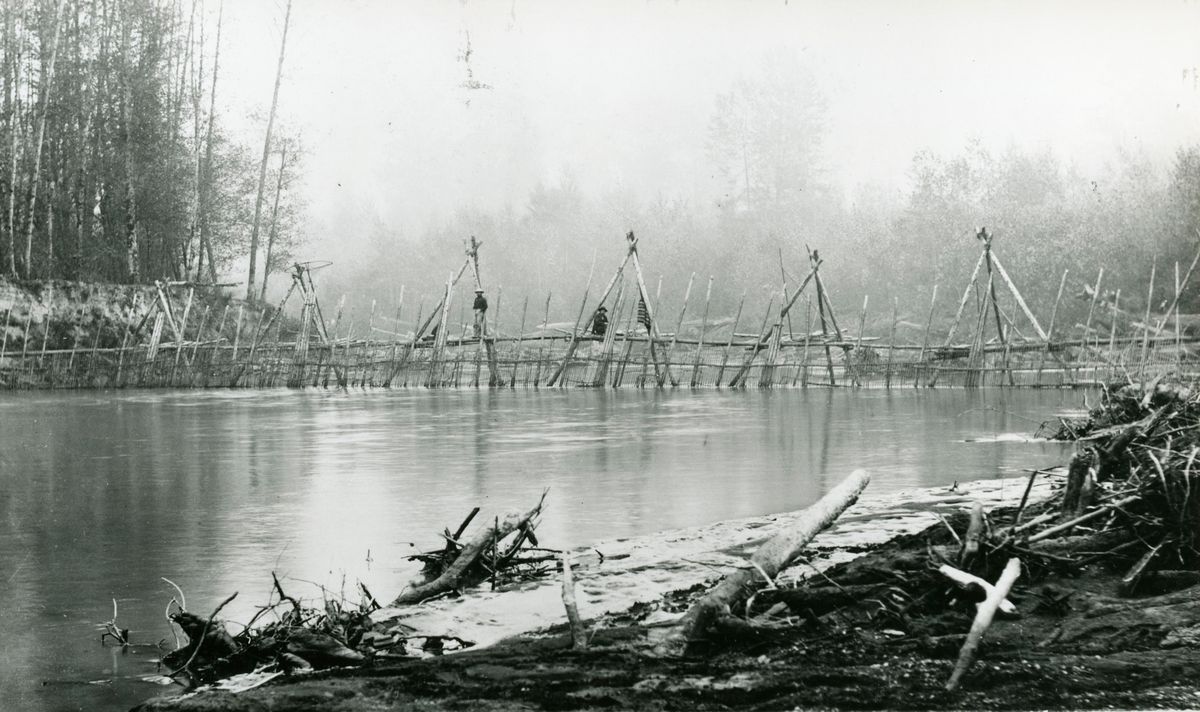Secrets Of Washington’s Ancient Fishing Weirs

Have you ever wondered how ancient civilizations caught fish without modern tools? In Washington, ancient fishing weirs offer a fascinating glimpse into the past. These structures, built by Native American tribes, were ingeniously designed to trap fish as they swam upstream. Made from wood and stone, these weirs were placed in rivers and streams to create barriers, guiding fish into small enclosures where they could be easily caught. This method was not only efficient but also sustainable, ensuring that fish populations remained healthy. Today, you can still find remnants of these ancient weirs, providing a unique window into the resourcefulness of early inhabitants.
Discovering Washington's Ancient Fishing Weirs
Washington State is home to some of the oldest fishing weirs in North America. These ancient structures, used by Indigenous peoples to catch fish, offer a glimpse into the past. Let's explore some of these fascinating sites.
1. Lummi Island
Lummi Island, located in the San Juan Islands, is known for its ancient fishing weirs. The Lummi Nation used these structures to trap salmon during their seasonal runs. Today, visitors can see remnants of these weirs along the island's shores.
2. Skagit River
The Skagit River, flowing from the Cascade Mountains to Puget Sound, has a rich history of fishing weirs. Indigenous tribes, such as the Upper Skagit and Sauk-Suiattle, built these weirs to harvest salmon. Evidence of these ancient structures can still be found along the riverbanks.
3. Nisqually River
The Nisqually River, originating from Mount Rainier, was another important site for fishing weirs. The Nisqually Tribe used these weirs to catch salmon and other fish. Some of these ancient structures have been preserved and can be seen near the river's mouth.
4. Columbia River
The Columbia River, one of the largest rivers in North America, was a major site for fishing weirs. Indigenous tribes, including the Yakama and Umatilla, built these weirs to catch salmon and other fish. Remnants of these ancient structures can still be found along the river's banks.
5. Lake Washington
Lake Washington, located near Seattle, was another important site for fishing weirs. Indigenous tribes, such as the Duwamish and Snoqualmie, used these weirs to catch fish. Some of these ancient structures have been preserved and can be seen along the lake's shores.
6. Hood Canal
Hood Canal, a fjord-like inlet of Puget Sound, was a significant site for fishing weirs. The Skokomish Tribe used these weirs to catch salmon and other fish. Remnants of these ancient structures can still be found along the canal's shores.
7. Willapa Bay
Willapa Bay, located on the southwest coast of Washington, was another important site for fishing weirs. Indigenous tribes, such as the Chinook and Chehalis, built these weirs to catch fish. Evidence of these ancient structures can still be found along the bay's shores.
8. Quinault River
The Quinault River, flowing from the Olympic Mountains to the Pacific Ocean, was a key site for fishing weirs. The Quinault Tribe used these weirs to catch salmon and other fish. Some of these ancient structures have been preserved and can be seen near the river's mouth.
9. Puyallup River
The Puyallup River, originating from Mount Rainier, was another important site for fishing weirs. The Puyallup Tribe used these weirs to catch salmon and other fish. Remnants of these ancient structures can still be found along the river's banks.
10. Chehalis River
The Chehalis River, flowing from the Willapa Hills to Grays Harbor, was a significant site for fishing weirs. Indigenous tribes, such as the Chehalis and Cowlitz, built these weirs to catch fish. Evidence of these ancient structures can still be found along the river's banks.
Discovering Washington's Hidden History
Washington's ancient fishing weirs offer a glimpse into the past. These structures, built by indigenous tribes, showcase their ingenuity and deep connection to nature. Visiting these sites, you can appreciate the craftsmanship and understand the importance of sustainable fishing practices.
Exploring these weirs also highlights the rich cultural heritage of the region. Each site tells a story of survival, community, and respect for the environment. As you walk through these historical landmarks, imagine the lives of those who depended on these weirs for their livelihood.
Next time you're in Washington, take a moment to visit these hidden gems. They are not just relics but a testament to human resilience and creativity. By preserving and learning from these ancient structures, we honor the legacy of the people who built them and gain valuable insights for our future.

